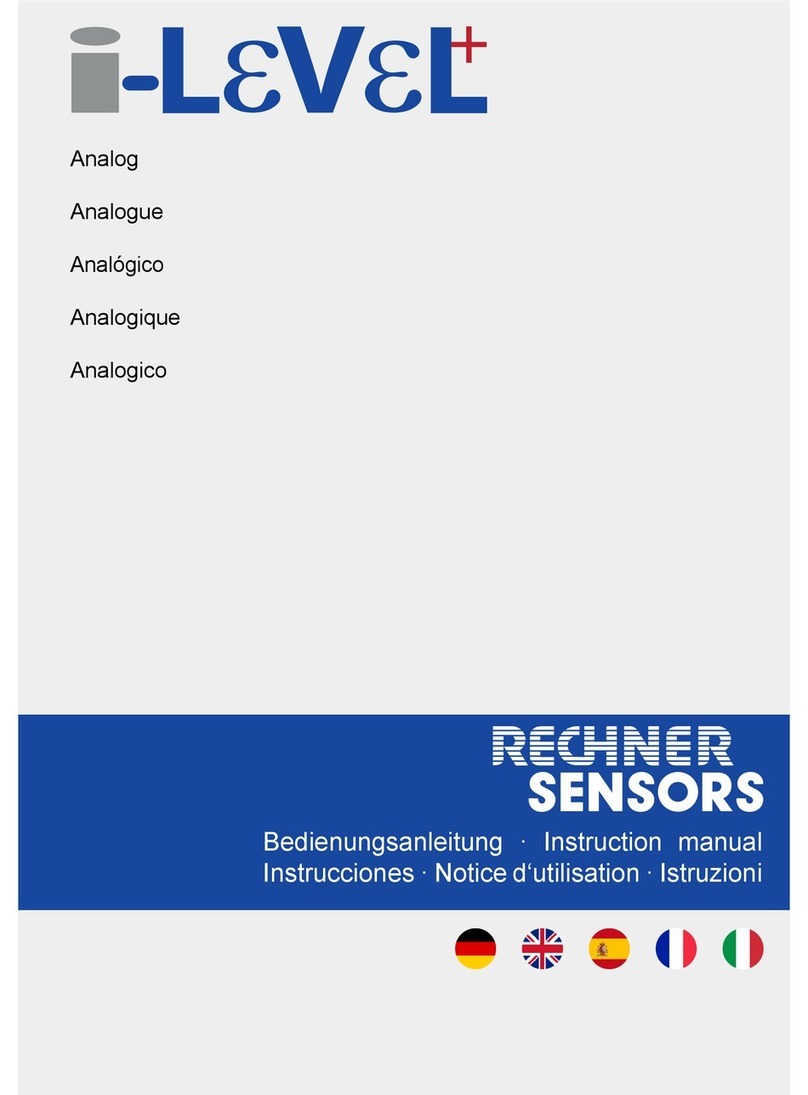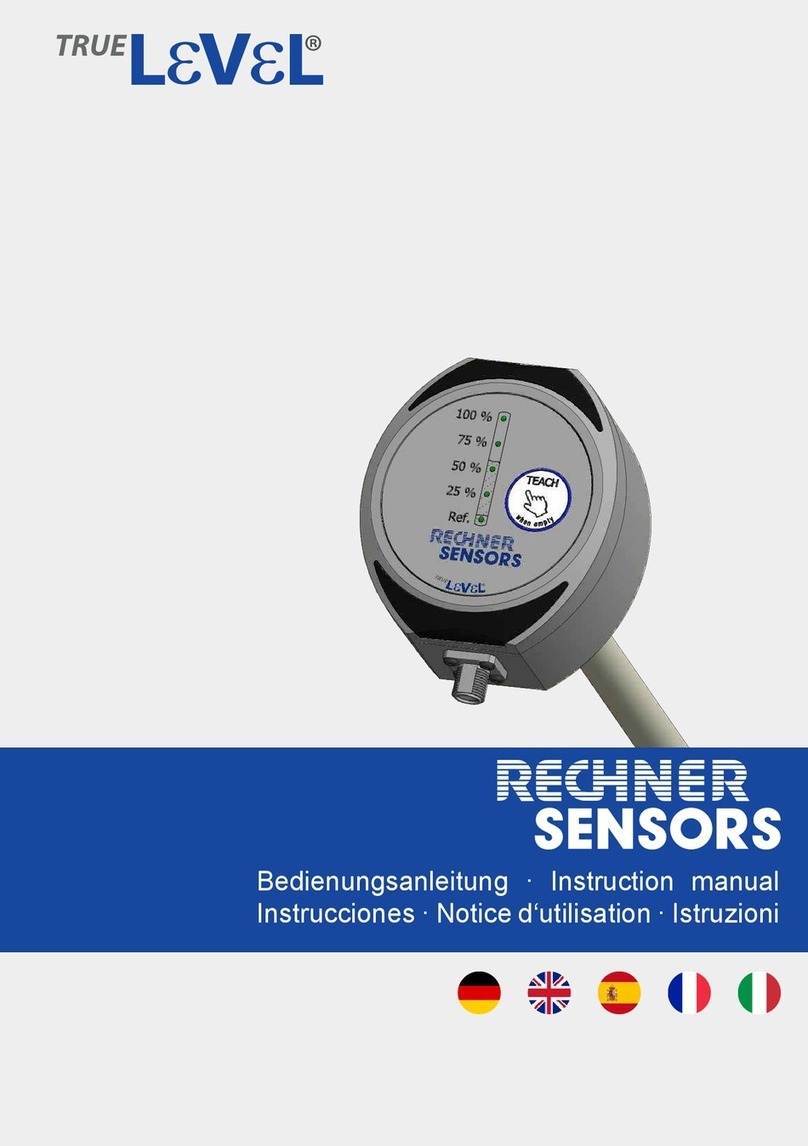3
Inhaltsverzeichnis • Table of contents • Indice • Table des matières • Indice
ITALIANO
ESPAÑOL
FRANÇAIS
ENGLISH
DEUTSCH Wichtige Hinweise Seite 2
Allgemeine Beschreibung Seite 4
Montage / Technische Daten Seite 5 / 6
Elektrischer Anschluss / EasyTeach Chart Seite 7
Schaltausgangs-Charakteristika / Einstellbedingungen Seite 8
Einstellphilosophie KFI-5-1...ETW (1 Schaltpunkt) Seite 9
Einstellung KFI-5-1...ETW (1 Schaltpunkt) Seite 10
Reset / Testbetrieb KFI-5-1..ETW (1 Schaltpunkt) Seite 11 / 12
Einstellphilosophie KFI-5-2...ETW (2 Schaltpunkte) Seite 13
Einstellung KFI-5-2...ETW (2 Schaltpunkte) Seite 14
Reset / Testbetrieb KFI-5-2...ETW (2 Schaltpunkte) Seite 15 / 16
Important Note Page 2
General Description Page 18
Mounting / Technical Data Page 19 / 20
Electrical Connection / EasyTeach Chart Page 21
Switching output characteristics / Adjustment conditions Page 22
Adjustment philosophy KFI-5-1...ETW (1 Switching Point) Page 23
Adjustment KFI-5-1...ETW (1 Switching Point) Page 24
Reset / Test mode KFI-5-1...ETW (1 Switching Point) Page 25 / 26
Adjustment philosophy KFI-5-2...ETW (2 Switching Points) Page 27
Adjustment KFI-5-2...ETW (2 Switching Points) Page 28
Reset / Test mode KFI-5-2...ETW (2 Switching Points) Page 29 / 30
Nota importante Página 2
Descripción general Página 32
Montaje / Características técnicas Página 33 / 34
Conexión eléctrica / EasyTeach Chart Página 35
Características de las salidas de conmutación / Condiciones de ajuste Página 36
Filosofía de ajuste KFI-5-1...ETW (1 punto de conmutación) Página 37
Ajuste KFI-5-1...ETW (1 punto de conmutación) Página 38
Reset / Modo test KFI-5-1...ETW (1 punto de conmutación) Página 39 / 40
Filosofía de ajuste KFI-5-2...ETW (2 puntos de conmutación) Página 41
Ajuste KFI-5-2...ETW (2 puntos de conmutación) Página 42
Reset / Modo test KFI-5-2...ETW (2 puntos de conmutación) Página 43 / 44
Remarque importante Page 2
Description générale Page 46
Montage / Caractéristiques techniques Page 47 / 48
Raccordement électrique / Charte EasyTeach Page 49
Caractéristiques des sorties de commutation / Conditions d‘étalonnage Page 50
Philosophie d‘étalonnage pour sonde KFI-5-1…ETW (1 seuil) Page 51
Étalonnage pour sonde KFI-5-1…ETW (1 seuil) Page 52
Fonctions RESET / TEST pour sonde KFI-5-1…ETW (1 seuil) Page 53 / 54
Philosophie d‘étalonnage pour sonde KFI-5-2…ETW (2 seuils) Page 55
Étalonnage pour sonde KFI-5-2…ETW (2 seuils) Page 56
Fonctions RESET / TEST pour sonde KFI-5-2…ETW (2 seuils) Page 57 / 58
Nota importante Pagina 2
Descrizione generale Pagina 60
Montaggio / Dati tecnici Pagina 61 / 62
Collegamento elettrico / EasyTeach Chart Pagina 63
Caratteristiche uscita di commutazione / Condizione di regolazione Pagina 64
Regolazione KFI-5-1...ETW (1 punto di commutazione) Pagina 65 / 66
Reset / Funzione Test KFI-5-1...ETW (1 punto di commutazione) Pagina 67 / 68
Regolazione KFI-5-2...ETW (2 punti di commutazione) Pagina 69 / 70
Reset / Funzione Test KFI-5-2...ETW / (2 punti di commutazione) Pagina 71 / 72





























